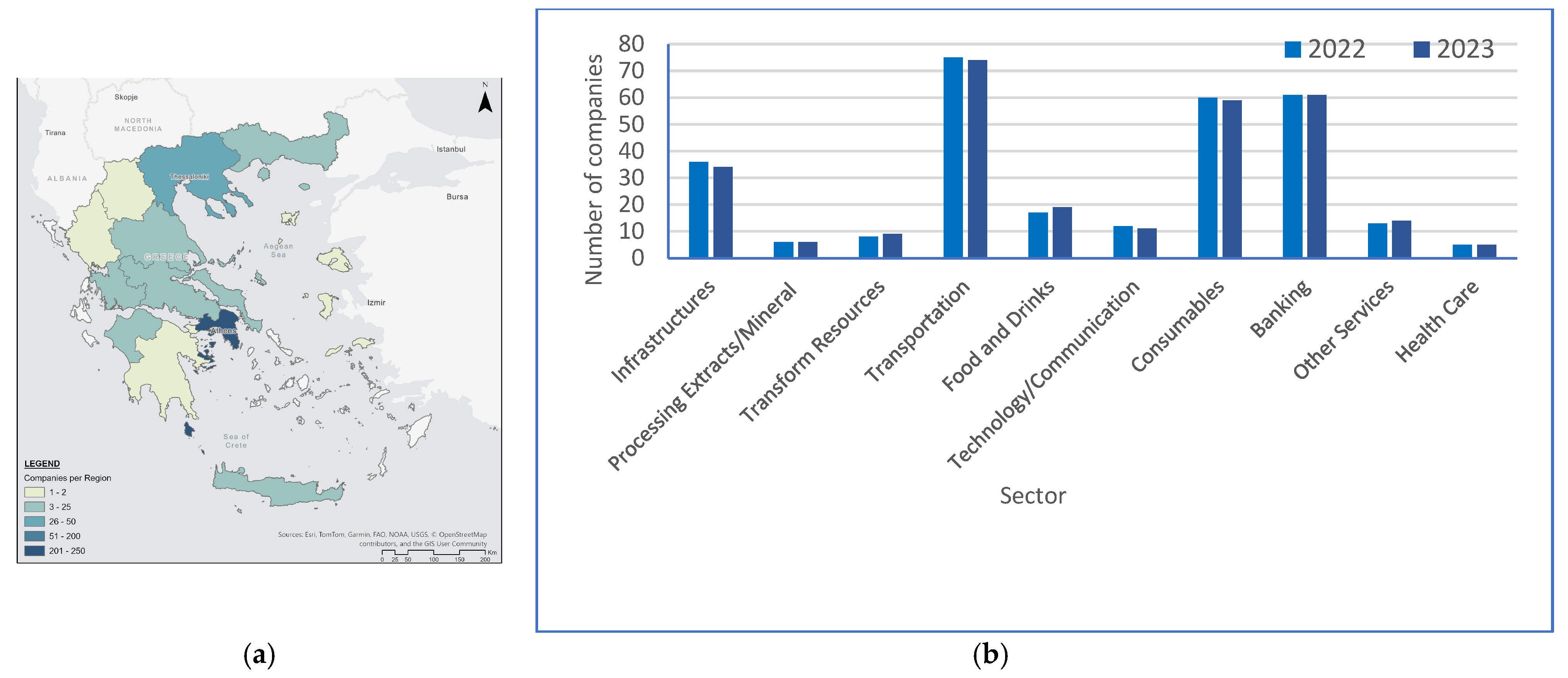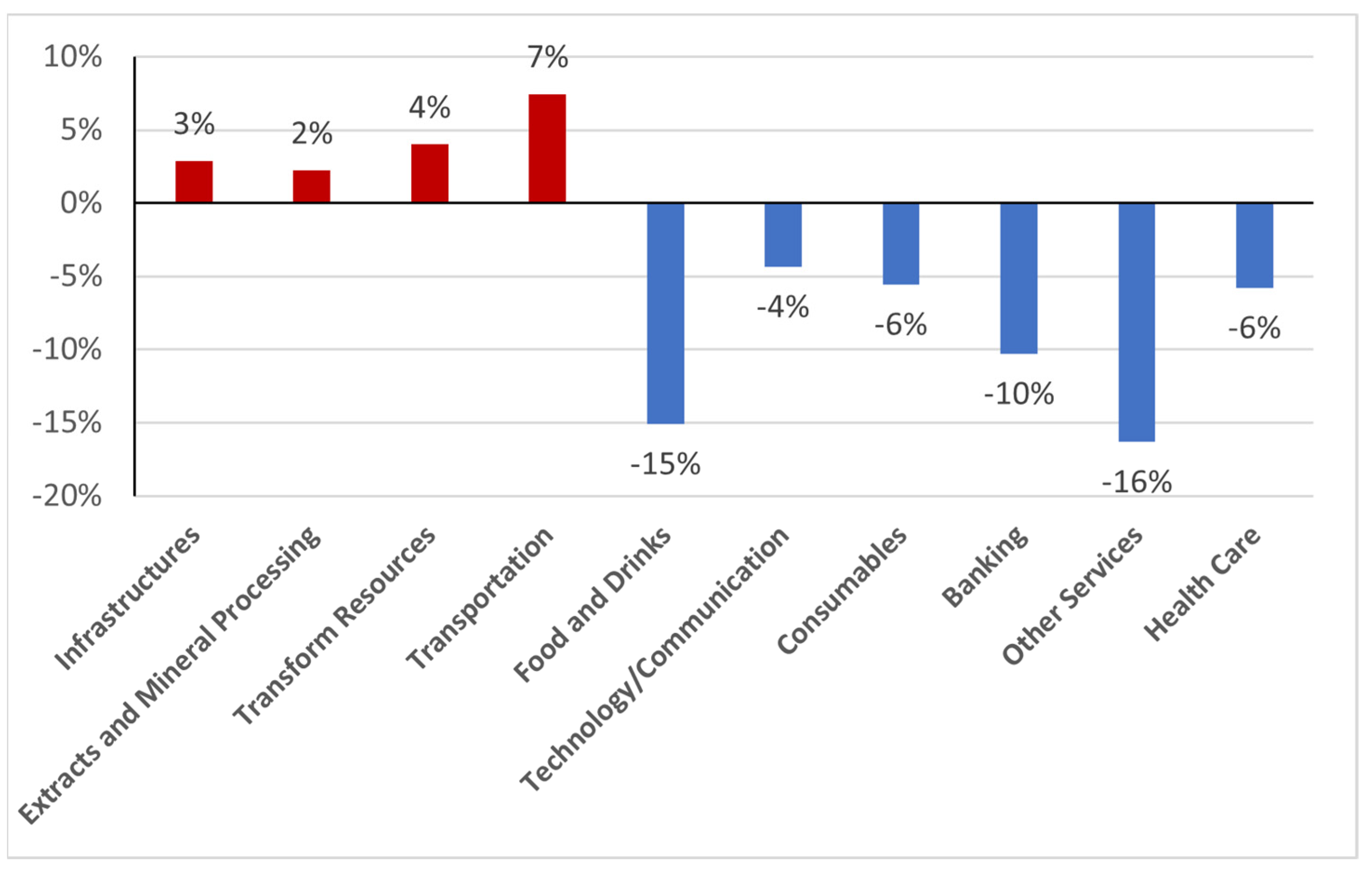Mitigation Measures Towards Net Zero Carbon Emissions †
Abstract
1. Introduction
2. Methodology—Technical Framework
3. Results and Discussion
4. Conclusions
Author Contributions
Funding
Institutional Review Board Statement
Informed Consent Statement
Data Availability Statement
Acknowledgments
Conflicts of Interest
Abbreviations
| NECCA | Natural Environment and Climate Change Agency |
| CASP | Climate Action and Sustainability Portal |
References
- UNFCC. Available online: https://unfccc.int/documents/184656 (accessed on 19 June 2025).
- EUR-Lex. Available online: https://eur-lex.europa.eu/legal-content/EN/TXT/?uri=CELEX:32021R1119 (accessed on 19 June 2025).
- GNCL-Greek national climatic law, Num. 4936 (A 105). 2022. Available online: https://search.et.gr/el/fek/?fekId=621159 (accessed on 19 June 2025).
- Voudouri, A.; Papadopoulou, M.; Metheniti, K. Greek National Climate Law: A tool for Climate Change mitigation and adaptation. In Proceedings of the MedCLIVAR-SISC 2024, Lecce, Italy, 24–27 September 2024. [Google Scholar]
- ISO 14064-1; Greenhouse Gases—Part 1: Specification with Guidance at the Organization Level for Quantification and Reporting of Greenhouse Gas Emissions and Removals (Original Work Published 2018). International Organization for Standardization: Geneva, Switzerland, 2018.
- National Inventory Report, 2025, Ministry of Energy and Environment. Available online: https://ypen.gov.gr/wp-content/uploads/2025/04/2025_NIR_Greece.pdf (accessed on 19 June 2025).




| 2022 | Total (tn CO2 eq) | Energy Consumption (kWh) |
|---|---|---|
| Infrastructures | 18,041,230 | 1,305,104,456 |
| Extracts and Mineral Processing | 5,097,010 | 3,420,766,099 |
| Resources Transformation | 2,781,526 | 578,081,665 |
| Transportation | 483.222 | 410,520,794 |
| Food and Drinks | 675,860 | 1,108,377,373 |
| Technology/Communication | 370,345 | 631,940,444 |
| Consumables | 227,729 | 344,640,740 |
| Banking | 110,440 | 214,019,826 |
| Services | 20,477 | 28,450,624 |
| Health | 17,933 | 26,680,919 |
| Total | 27,825,772 | 8,068,582,941 |
| 2023 | Total (tn CO2eq) | Energy Consumption (kWh) |
|---|---|---|
| Infrastructures | 12,237,642 | 1,342,597,197 |
| Extracts and Mineral Processing | 4,686,623 | 3,496,794,150 |
| Resources Transformation | 2,793,509 | 601,160,430 |
| Transportation | 505,811 | 441,066,215 |
| Food and Drinks | 449,949 | 941,255,177 |
| Technology/Communication | 257,152 | 604,490,480 |
| Consumables | 151,163 | 325,505,529 |
| Banking | 56,786 | 192,006,776 |
| Services | 13,860 | 23,811,041 |
| Health | 12,363 | 25,137,663 |
| Total | 21,164,859 | 7,993,824,658 |
Disclaimer/Publisher’s Note: The statements, opinions and data contained in all publications are solely those of the individual author(s) and contributor(s) and not of MDPI and/or the editor(s). MDPI and/or the editor(s) disclaim responsibility for any injury to people or property resulting from any ideas, methods, instructions or products referred to in the content. |
© 2025 by the authors. Licensee MDPI, Basel, Switzerland. This article is an open access article distributed under the terms and conditions of the Creative Commons Attribution (CC BY) license (https://creativecommons.org/licenses/by/4.0/).
Share and Cite
Voudouri, A.; Metheniti, K.; Oikonomou, A. Mitigation Measures Towards Net Zero Carbon Emissions. Environ. Earth Sci. Proc. 2025, 35, 42. https://doi.org/10.3390/eesp2025035042
Voudouri A, Metheniti K, Oikonomou A. Mitigation Measures Towards Net Zero Carbon Emissions. Environmental and Earth Sciences Proceedings. 2025; 35(1):42. https://doi.org/10.3390/eesp2025035042
Chicago/Turabian StyleVoudouri, Antigoni, Kyriaki Metheniti, and Athanasios Oikonomou. 2025. "Mitigation Measures Towards Net Zero Carbon Emissions" Environmental and Earth Sciences Proceedings 35, no. 1: 42. https://doi.org/10.3390/eesp2025035042
APA StyleVoudouri, A., Metheniti, K., & Oikonomou, A. (2025). Mitigation Measures Towards Net Zero Carbon Emissions. Environmental and Earth Sciences Proceedings, 35(1), 42. https://doi.org/10.3390/eesp2025035042






